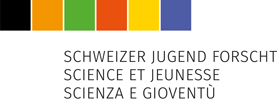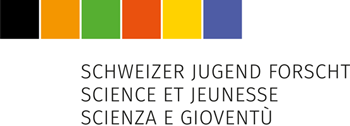Chemie | Biochemie | Medizin
Jasmine Kofmel, 2002 | Windisch, AG
The report describes a novel method of establishing an optical neurofeedback loop, both recording and stimulating with modern optical methods: Neuronal activity from the primary motor cortices (M1) of rats is recorded, and their medial forebrain bundle (MFB) and ventral tegmental area (VTA) are stimulated, which mimics a ‹reward› signal and thus can act as a reinforcer. In this project, I established an optical neurofeedback loop by combining photometry and optogenetics. The goal was to establish a method, where a neurofeedback loop is used, so that the rat can learn to exhibit the specified brain state. Chrimson, an optogenetic sensor used to modify neurons to express light-sensitive ion channels, was delivered to the VTA. GCaMP8f and GCaMP8s, genetically encoded calcium indicators, were delivered to the M1 to record fluorescence activity signals via fiber photometry, enabling the investigation of how activity patterns in neuronal networks influence behavior. Through the analysis of the obtained photometry data, a target threshold of the M1 signal was defined for the feedback system, at which the MFB is stimulated by laser light. In first preliminary experiments I could demonstrate the feasibility of this approach. This feedback approach promises to be a useful tool for reinforcing brain states related to specific behaviors.
Introduction
The goal of my seven week project was to establish a small animal feedback paradigm. This paper describes the process of establishing a novel method of combining optogenetics and fiber photometry. In addition, the goal was to validate if the method works and to provide proof-of-concept demonstration data in a rat experiment.
Methods
To be able to train an animal to reproduce a certain behavior, a combination of multiple actions and reactions are necessary. The trainer needs to recognize the behavior and reinforce the animal at the proper time. In accordance with these proceedings, rats were trained to present a specified brain state through positive reinforcement, which was dopamine release. The two brain regions that were of interest, with the purpose of studying learning abilities, are the M1 and the VTA. The M1 generates signals to direct the movement of the body and also plays a role in learning and cognition. The VTA plays a role in reward, motivation and aversion. Its dopamine projections go through the MFB to multiple regions of the brain, including the M1. Firstly, photometry data was collected from the M1 to determine the moment of stimulation, aka. the time of reward. To detect M1 activity, we expressed GCaMP8 calcium indicators in M1 neurons. Because neuronal activity is associated with calcium influx into the neurons, the photometric GCaMP8 signal is a good indicator of M1 activity. The photometry data of the M1 is checked in real-time, whether it exceeds a predefined threshold. If the calcium signal amplitude exceeds the threshold, the laser is activated to stimulate the VTA-to-M1 pathway and positively reinforce the rat, which then should amplify the behavioural output. The reward was given through stimulation of the VTA using optogenetics, which lets us selectively stimulate neurons with laser-light. A mid-term goal is to also perform such neurofeedback inside an MR scanner, to detect whole-brain activity using fMRI, and thereby to reveal the influence of stimulation on the whole brain.
Results
By combining optogenetics and fiber photometry I established a novel method of recording and stimulating neuronal activity in a closed loop manner. I successfully established the above-mentioned methods separately and then demonstrated their combination in an actual closed loop feedback system in the rat model. First steps were made to apply this novel approach for uncovering neuronal processes underlying learning in rodents.
Discussion
In the coming years, the combination of photometry and optogenetics needs to be further refined, and the test environment and research procedures need to be optimized. In any case, the method established here opens new fields of investigations to better understand brain mechanisms underlying learning.
Conclusions
With the newly established optical neurofeedback loop, it is possible to detect which brain states are exhibited upon conditioned or unconditioned stimulus presentation. In the future, scientist might be able to modify the feedback system and implement it in other mammals and possibly in humans. Such developments could allow for medical applications, for example to train a brain region to acquire a specific functionality or to regain an ability that was previously lost.
Würdigung durch den Experten
Prof. Dr. Fritjof Helmchen
Jasmine Kofmel hat einen technisch anspruchsvollen Messstand für neurowissenschaftliche Studien aufgebaut. Durch die erfolgreiche Integration moderner optischer Methoden gelang es ihr ein Neurofeedback-Loop aufzubauen, bei der Hirnaktivität in einer spezifischen Region (hier der motorischen Hirnrinde im Rattengehirn) mit einem Fluoreszenzindikator detektiert wird und an optische Stimulation einer Belohnungsregion gekoppelt wird. Die gewonnenen ersten Daten sind vielversprechend und der Aufbau von Frau Kofmel ermöglicht nun vielseitige Untersuchungen von Belohnungslernen und Hirnplastizität.
Prädikat:
hervorragend
Sonderpreis «International Summer Science Institute (ISSI)» gestiftet vom Weizmann Institut
Aargauische Kantonsschule Baden
Lehrerin: Dr. Irmgard Bühler



